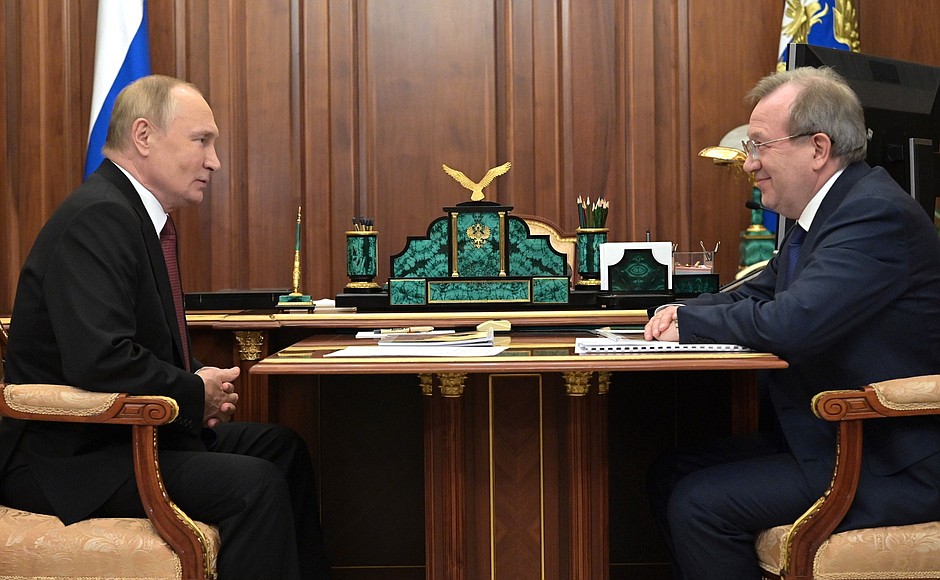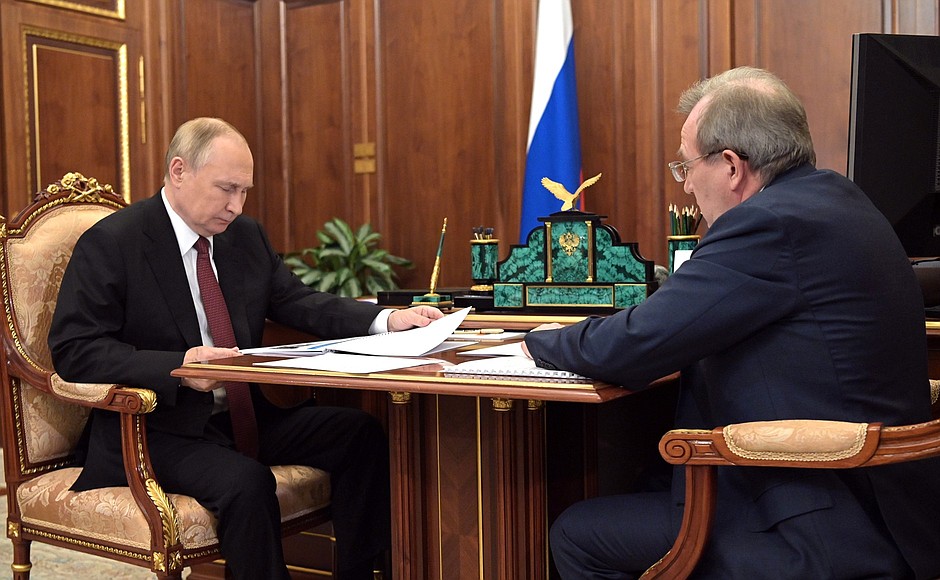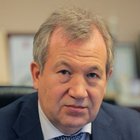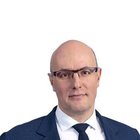On September 20, 2022, Gennady Krasnikov won the election and became President of the Russian Academy of Sciences. A corresponding Executive Order appointing him head of the RAS for a term of five years was signed by the President on September 26, 2022.
* * *
President of Russia Vladimir Putin: Mr Krasnikov, first of all, I would like to congratulate you on your election as President of the Russian Academy of Sciences, a highly important and the oldest association of our country’s leading institutes and scientists.
I would very much like the Academy to play a more important role in economic development, in improving the system of the state’s defence capabilities in the current conditions under your guidance. This concerns all aspects, including humanities and, of course, natural sciences.
Apart from holding this high-ranking position as President of the Russian Academy of Sciences, you are a leading specialist in the field of microelectronics, a priority area for Russia. All of us know this very well. I hope that your new position will also allow you to develop this sphere to which you have devoted many years of your life and where you have achieved outstanding results.
Mr Krasnikov, what do you see as priority areas for the Academy of Sciences?
President of the Russian Academy of Sciences Gennady Krasnikov: Thank you very much, Mr President. The new leadership of the Academy of Sciences was elected just over a month ago. Today, I would like to report on our vision and our plans for the future development of the Academy of Sciences. I would like to conduct the following presentation, if I may.
Of course, I would like to say that our goal is to involve the Russian Academy of Sciences in the state decision-making system. We should make sure that the Academy acquires high prestige in the state and society. Most importantly, this should become a reliable foundation for the leadership. This also concerns the organisation of unbiased and objective expert examinations, and it is very important for the Government and the country to have such expert examinations.
How are we going to accomplish this? The third slide shows the scientific and methodological management of institutes. One should say that we did not utilise the potential of the Law on the Russian Academy of Sciences in full measure, and we did not conduct adequate scientific and methodological management. Here is how it happened: every five years, we discussed candidacies of prospective directors of research organisations and analysed state contract reports.
What opportunities are we missing out on? I believe that we need to go back to the mechanism we used before: to create expert commissions in accordance with the law that will include leading scientists in these areas who will assess the performance of institutes. They will not just make comments but will look for new approaches together with them in order to analyse the results, achievements, equipment, analytical tools and the efficiency of research management.
The commissions should make such decisions here, in the bureau of field departments – by the way, here is information about the Academy of Sciences and the field departments it has – and then send them to the Government to adopt the decisions.
I would like to note that the current classification of institutes is no longer relevant, and we think it needs to be abandoned as it hinders the development of research institutes.
The second important thing is the role of research councils. It is necessary to enhance it, given that there are research councils under the presidium and field departments, and they comprise not only representatives of the Academy, but also members of the relevant university science, representatives of high-tech companies, that is, they represent the entire range of such researchers. Therefore, it is necessary to enhance the importance of such councils in terms of expert evaluations too.
Let me give an example. I also head the council on quantum technologies. The Government, represented by Deputy Prime Minister Dmitry Chernyshenko, instructed us to monitor and assess roadmaps on quantum technologies. These are Rosatom – quantum calculations and simulators, Russian Railways – quantum data transmission and cryptography, and Rostec with the quantum sensor. We also review in detail amendments to the road maps, as well as tasks and reports, and we believe that this is efficient.
It is expected that each research council should be tied to a specific research funding programme, especially when it comes from the state budget. This would be viable.
We believe that our next mission is to induce large-scale projects. In the past, our country carried out very important atomic and space projects, which were driving the economy and encouraging the development of numerous related industries. We believe that the Presidium of the Academy of Sciences can initiate large-scale pro-active projects of this kind in specific areas of science. We would be ready to choose, together with the Government, such vitally important areas, and would both submit projects and ensure their further scientific and methodological guidance.
The next crucial issue is how to implement R&D. I would like to point out that a prominent scientist, George Porter – Zhores Alferov liked to cite him as an example – he was, incidentally, a foreign member of the USSR Academy of Sciences and the Russian Academy of Sciences and a 1967 Nobel Prize winner – he used to say that any fundamental science was an applied one, but occasionally its applied nature would transpire…
Vladimir Putin: We have to wait for this.
Gennady Krasnikov: Yes, five to ten years later. A case in point is the bipolar junction transistors, which were invented in 1949, while their mass production started in the 1950s a mere five or six years on. The next step was to use them in microelectronics. Or this can happen 50 to 100 years later…
Another graphic example is related, say, to gravitation. Gravitational waves were discovered. Today, the atomic accurate clock can help obtain gravimetric measurements and prospectively global positioning postures bypassing satellites just with a map based on the Earth’s gravimetric profile.
I think that, of course, it is only researchers involved in R&D who know the applied potential of their work. As an option, we suggest forming unincorporated consortiums involving fundamental science, applied research, academic research, hi-tech companies. This will create through chains geared to achieving specific results.
Moreover, their funding can come from different sources, such as the Ministry of Education and Science, state assignments, the Ministry of Industry and Trade, the Healthcare Ministry, the Ministry of Agriculture, and, what is quite important, from industries and businesses. We will achieve two goals this way. On the one hand, we obtain more funding, while on the other we will demonstrate the importance of our fundamental research that can lead to real results rather than just to articles in scientific journals.
<…>




